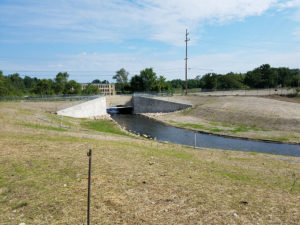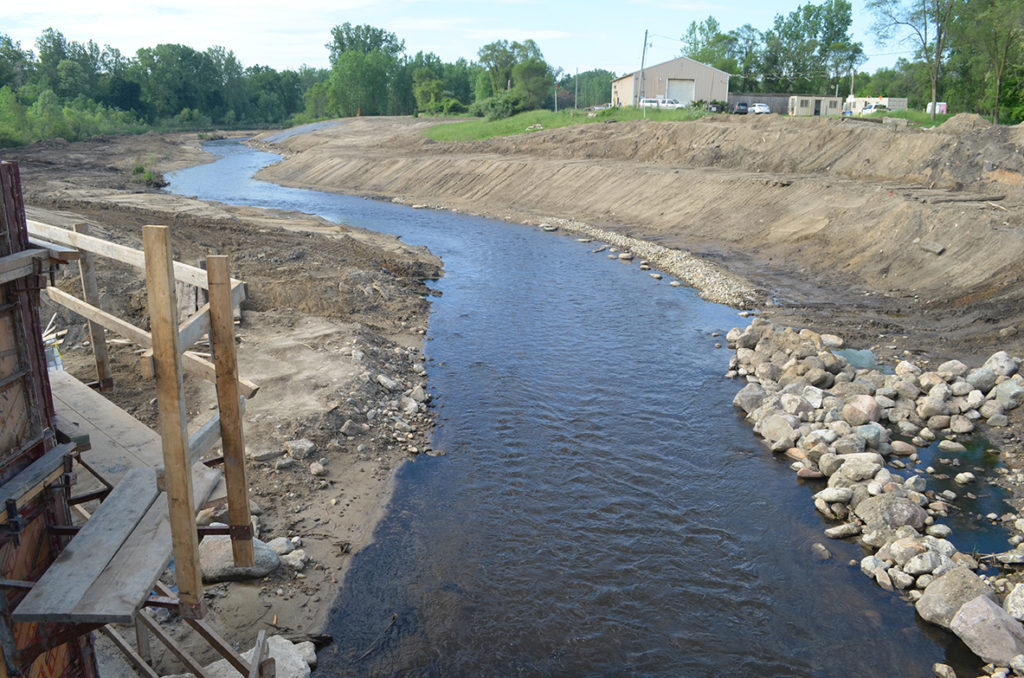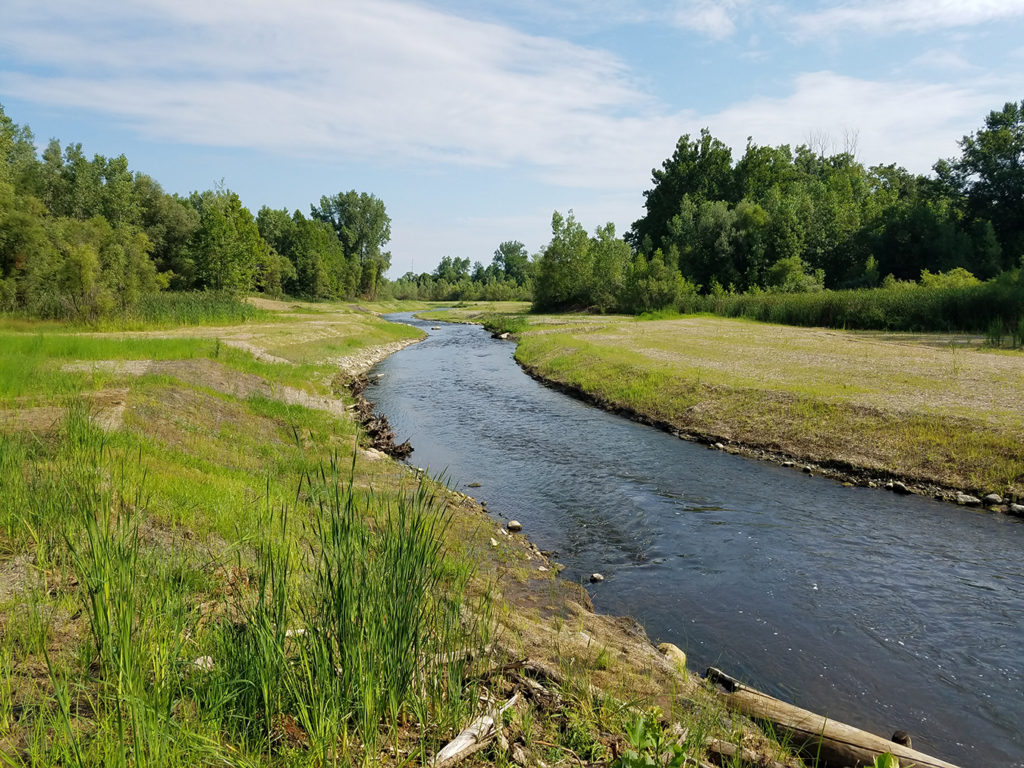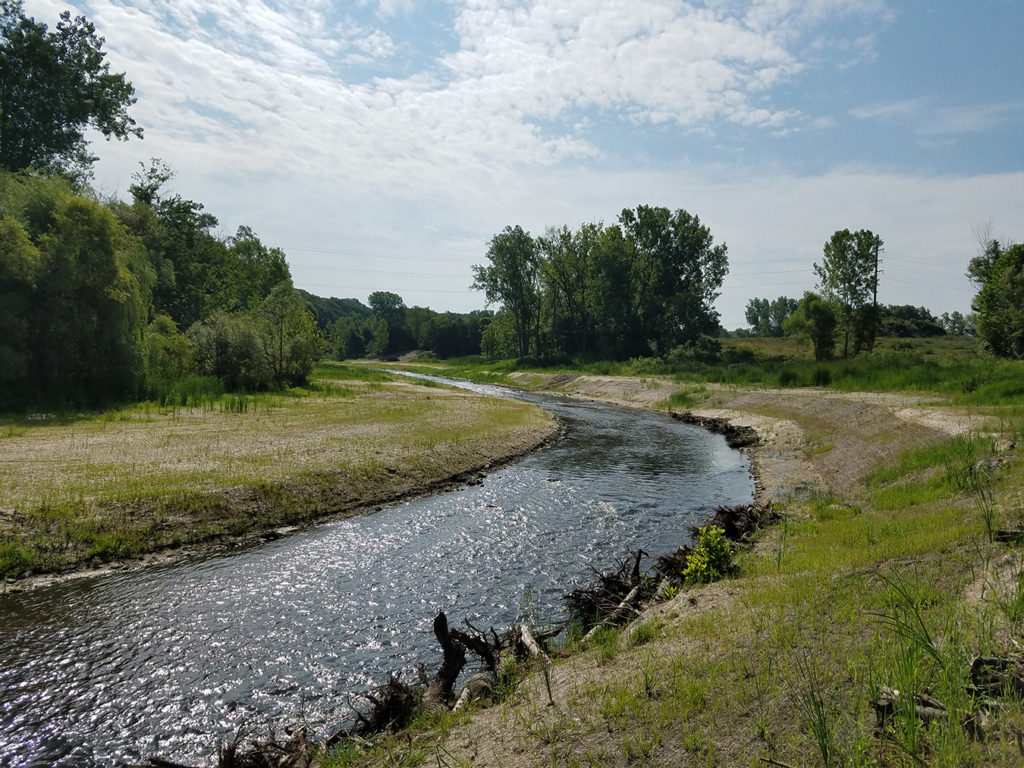 ECT provided oversight and managed construction activities, including removing Alcott Street dam, restoring Portage Creek, and documenting the project’s progression. The project is expected to restore natural resources and improve the habitat along a portion of Portage Creek and allow fish to swim through the former dam area.
ECT provided oversight and managed construction activities, including removing Alcott Street dam, restoring Portage Creek, and documenting the project’s progression. The project is expected to restore natural resources and improve the habitat along a portion of Portage Creek and allow fish to swim through the former dam area.
ECT’s Michael T. Hebert, CPG, CHMM, P.G., CUSTP, served as project manager. He led ECT’s multidisciplinary team, including Jim Kralik, Paul Meyer, CPG, P.G., CUSTP, and Craig Simon from ECT’s Site Assessment & Remediation (SAR) service line, and Tonya Hunter, LLA, CA, from ECT’s Natural Resources service line.
“The Alcott Dam Removal and Portage Creek Restoration project consisted of removing a dam structure, which was under structural failure, relocating Portage Creek, and restoring more than a third of mile of Portage Creek. The entire project was situated within a designated Superfund Area,” said Hebert.
The Alcott Street Dam was located immediately south of the Alcott Street Bridge, between South Burdick Street and Portage Street, in Kalamazoo, Michigan. The area was part of the designated Portage Creek/Kalamazoo River Superfund study area and has several recognized areas of concerns as a direct result of historical releases of polychlorinated-biphenyls from former paper mill operations to the area’s watershed. The natural resource damage to Portage Creek extended upstream of the dam from Cork Street to Alcott Street.
The Michigan Department of Environmental Quality (MDEQ) Land and Water Management Division designated the Alcott Street Dam a high-risk hazard/structure and recommended removing the dam structure and restoring Portage Creek for the future well-being of the environment and local community. As a result, MDEQ’s Remediation and Redevelopment Division (RRD) commissioned ECT to provide oversight and manage construction activities, including removing Alcott Street dam, restoring Portage Creek, and documenting the project’s progression.
“The project was completed within the contracted timeframe and under budget. Without direct support from MDEQ, the project goals would have been impossible to achieve. As the onsite representative for the State of Michigan, ECT appreciates the support MDEQ provided throughout the project,” said Hebert. “I sincerely appreciate the efforts of the MDEQ and ECT staff that worked directly and indirectly on this project. Their collaboration made my part of the project manageable during times when minor modifications were made to achieve the goals that best protected the well-being of our great state.”








